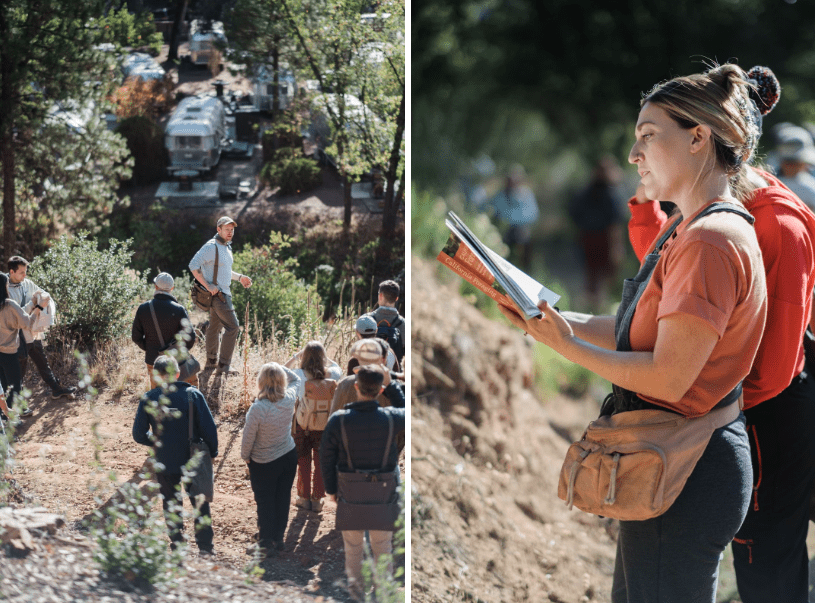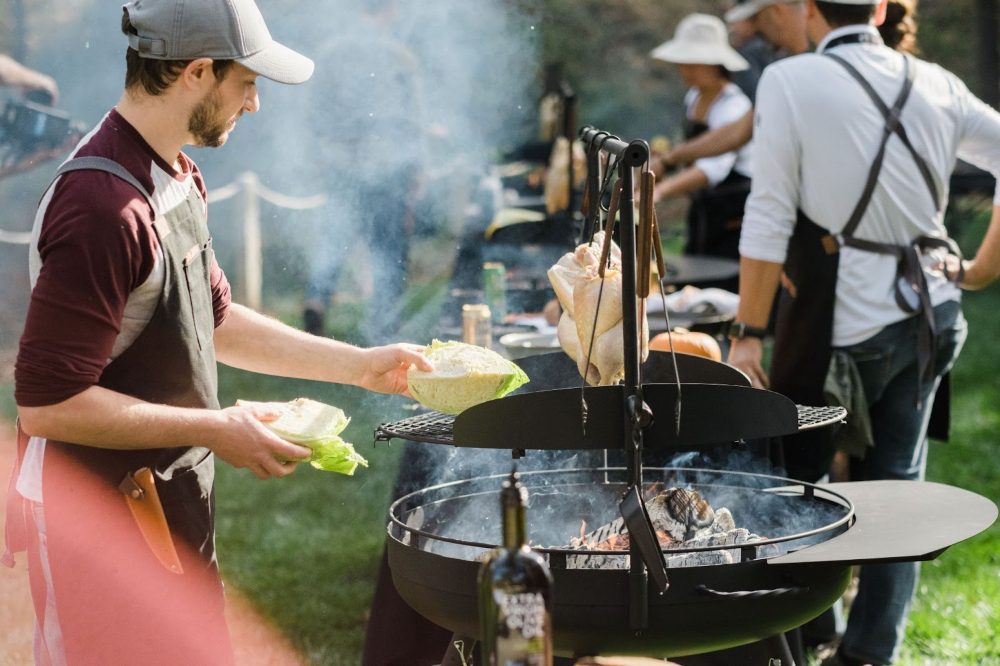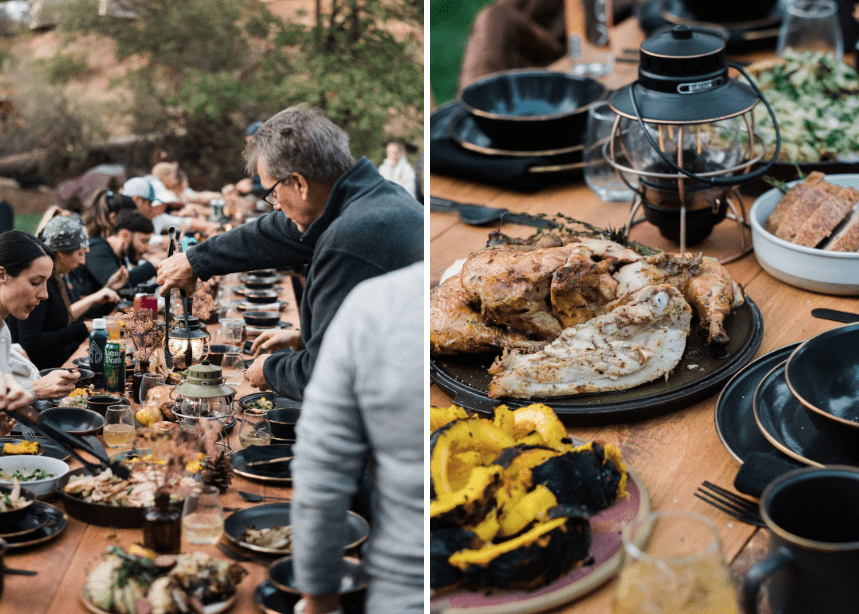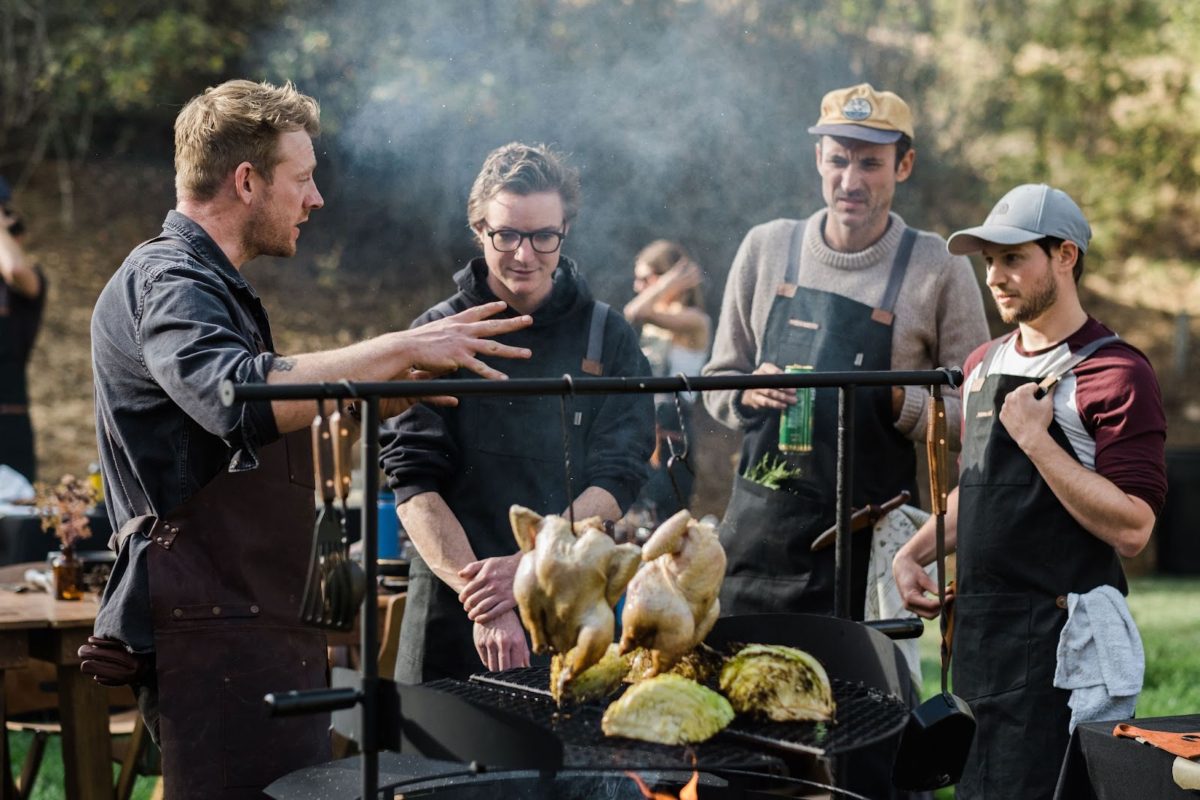This fall in Yosemite, we teamed up with Barebones to offer unique culinary experiences at AutoCamp. We hosted Chef Kevin O’Connor for an unforgettable experience where guests learned how to forage Sierra wild edibles then returned to AutoCamp to cook a meal over open fire. This immersive culinary experience featured a variety of Barebones product, including gathering bags, Cowboy grills, wilderness paring knives, aprons, and more.
Fall Foraging Tips in the Sierras
In the morning, we used the Barebones Foraging and Gathering Bag to collect Sierra wild edibles on a trail that rings around AutoCamp. Chef Kevin provided tips for identifying and harvesting sage, cedar, mullein, pine, manzanita, and many other varieties. Even with the dry conditions, there’s plenty of sustainable wild species that can enhance any meal or provide medicinal benefits.

Manzanita
- Uses: Flowers make a lovely garnish, but you need to catch them just right: Young flowers are sweet and full of nectar, but they rapidly become tannic and bitter. The only way to tell is to taste them. Unripe berries make a fantastic cider. Manzanita, as the Spanish speakers out there have already figured out, means “little apple” in Spanish.
- Found: Manzanita is everywhere here in the Sierra Nevada. It is a ubiquitous shrub that can grow into a small tree, with unmistakable, gnarled branches ranging from a crimson to a muted orange.
Sage
- Uses: Wild Sage leaves can be used as a ground spice, similar to how you would process garden sage. It can be perfect for adding flavor to soups, seasoning meat, or brewing a tea.
- Found: There’s hundreds of varieties of sage in California, found in all climates, that are safe to consume. Look to identify each variety using a field guide or book.
-
Mullein
- Uses: Can be used as a supplement, but it’s very commonly consumed as a tea, brewed from parts of the plant with hot water to extract some of its nutrients and benefits.
- Found: Common on roadsides, meadows and pasture lands in the Sierras.
-
Cooking With Fire Tips from Chef Kevin O’Connor
- Using multiple types of wood is okay if you know the difference. Oak burns slowest, offers a Smokey flavor, and provides the optimal coal bed to use for longer term meals. Almond is preferred for enhanced flavor profiles and it’s often found after orchards are pruned. Pine will create the greatest amount of short term heat and smoke and may burn easily so use sparingly for boosting the fire.
- Any vegetable you can peel can be put directly into the fire. We roasted pumpkins and while there was a visible exterior char, when peeled the interior is moist, smokey and delicious. This technique requires periodic turning and maintenance but is easy to do passively while prepping other dishes. Tip: Stick a knife into the pumpkin to check on the softness like you would a cake to know when it’s ready.
- Your fire is a living breathing thing to be managed. If anything the major lesson is to manage your coal bed and learn to fuel and tame the fire when needed.

During the weekend, Chef Kevin O’Connor curated the perfect campfire menu where guests could learn wood-fired techniques using a selection of Barebones products.
Chef Kevin’s Menu
- Grilled Bison and Venison Sausages with Whole Grain Mustard, Pickled Heirloom Carrots
- Cedar Roasted BrookTrout, Grilled Lemon
- Grilled Cabbage, Coal Roasted Onion Chimichurri
- Wild Sage and Chilean Merken Rubbed Chickens
- Medley of potatoes and roasted vegetables
- Grilled sourdough with Cobram Estate extra virgin olive oil

Guests teamed up with new friends around a grill and prep station to prepare, season, and grill all courses, with expert instruction from Chef Kevin. After all was done, we sat down and shared a meal together. Cheers to the perfect day at AutoCamp Yosemite!
